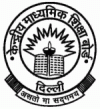
SAMPLE
TEST PAPER
CBSE X Submitted Assessment II: 2011
Subject – Social Science
Time: – 3 hours
Instructions : In this question paper there are 36 questions and all
questions are compulsory.
1. What is the name given to the customs union formed in
Prussia in 1834 to remove tariff barriers on trade and bind the Germans
economically?
(a) La patrie
(b) Citoyen
(c) Zollverein
(d) Carbonari
OR
The French colonization in Vietnam was based on economic exploitation and a
civilizing mission which aimed at
(a) Promoting local cultures in Vietnam.
(b) Preserving local traditions.
(c) Offering protection to different religious groups.
(d) Destroying local culture, religion and tradition in Vietnam.
2. How was ‘Germania’, the female allegory of the German nation visually
represented?
(a) Wearing a red cap
(b) Wearing a crown of oak leaves
(c) Wearing the tricolor
(d) With a cockade
Or
In which area of Vietnam was Hoa Hao Movement more popular?
(a) Tonkin
(b) Mekong Delta
(c) Hanoi
(d)Annan
3. Who was the Writer of the book ‘Hind Swaraj’?
(a) Jawahar Lal Nehru
(b) Rabidranath Tagore
(c) Mahatma Ganchi
(d) B.R. Ambedkar
4. Baba Ramchandra, a sanrasi, was the leader of which of the
following movements?
(a) Khilafat Movement
(b) Peasants’ movement of Awadh
(c) Militant Guerrilla movement of Andhra Pradesh
(d) Plantattion workers’ movement in Assam
5. Which one of the following states is the largest producer of
Bauxite in India?
(a) Orissa
(b) Madhya Pradesh
(c) Andhra Pradesh
(d) Jharkhand
6. Koderma in Jharkhand, is the leading producer of which one of the
following minerals?
(a) Copper
(b) Mica
(c) Iron ore
(d) Bauxite